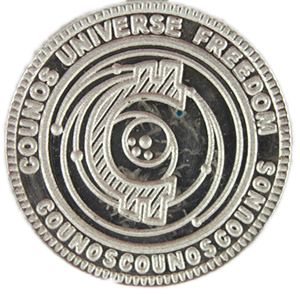


Scorefam PriceSFT
Key data of Scorefam
About Scorefam (SFT)
The Historical Perspective and Significant Remarks on Cryptocurrencies
Cryptocurrency, the digital or virtual form of fiat currency, holds a pivotal place in the global economy today. With the inception of these digital assets, the landscape of the financial world has significantly reshaped. Here, we explore the historical significance, distinctive features, and potential impact of cryptocurrencies on the future economy.
Historical Context of Cryptocurrency
The origin of cryptocurrency goes back to the global financial crisis of 2008. That year, a person (or group) under the pseudonym Satoshi Nakamoto published a whitepaper titled "Bitcoin: A Peer-to-Peer Electronic Cash System", where the idea of a digital currency, Bitcoin, was first introduced. Bitcoin, as the first created cryptocurrency, acted as an alternative to the traditional banking system and fiat currency that held a decentralized algorithm in its core. Over time, the cryptocurrency horizons expanded, and today, thousands of digital currencies are in play in the crypto market.
Key Features of Cryptocurrency
-
Decentralization: Unlike conventional fiat currency, cryptocurrencies operate on decentralization. It implies that digital currencies are not controlled or regulated by any central authority like a government or financial institution.
-
Transparency and Anonymity: Each cryptocurrency transaction is recorded on a public ledger, known as the blockchain, warranting high transparency. Tied to this is the concept of anonymity as the identities of the users involved in transactions are concealed with cryptographic codes.
-
Security: As cryptocurrencies are dependent on cryptography, it ensures a high level of security against fraud and counterfeiting, a feature unattainable by traditional fiat currencies.
-
Scarcity: Cryptocurrencies like the Bitcoin have a finite supply cap, pushing the basic economic principle of supply and demand. This feature injects a significant value to these digital currencies.
-
Fast and Global: Cryptocurrency transactions are processed instantly, overcoming the barriers of location and time. The transactions are propagated nearly instantly in the network and are confirmed in a couple of minutes.
The Future of Cryptocurrency
The blockchain technology that supports cryptocurrencies is infiltrating various sectors, from logistics and healthcare to election voting systems. Furthermore, industries are exploring the use of digital tokens in the form of stable coins pegged to fiat currencies, aiming to blend the benefits of both worlds.
Despite skepticism and debates around legal implications, security threats, and potential market bubbles, cryptocurrencies have been gaining acceptance. As technology advances and regulations become more defined, digital assets like Bitcoin are likely to disrupt traditional finance, shaping a more inclusive, secure, and efficient global economic system.
Wrapping-Up
Understanding cryptocurrencies becomes increasingly critical as the digital economy expands. The unique design, powerful benefits, and potential for reshaping global financial systems make cryptocurrencies a significant addition to the investment portfolios of individuals and institutions. As the impacts of digital currencies unfurl, a new chapter in the history of monetary systems is being written.
AI analysis report on Scorefam
Live Scorefam Price Today in USD
Scorefam Price Prediction
What will the price of SFT be in 2026?
What will the price of SFT be in 2031?
FAQ
What is the current price of Scorefam?
What is the 24 hour trading volume of Scorefam?
What is the all-time high of Scorefam?
Can I buy Scorefam on Bitget?
Can I get a steady income from investing in Scorefam?
Where can I buy Scorefam with the lowest fee?
Scorefam holdings by concentration
Scorefam addresses by time held

How to buy Scorefam(SFT)

Create Your Free Bitget Account

Verify Your Account

Convert Scorefam to SFT
Join SFT copy trading by following elite traders.
Buy more
Where can I buy Scorefam (SFT)?
Video section — quick verification, quick trading

SFT resources
Scorefam ratings
Related assets




















.png)












